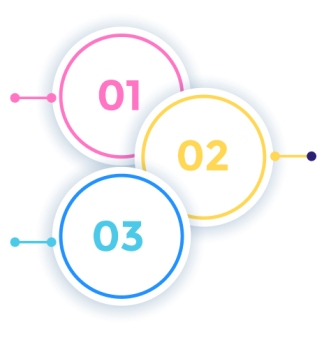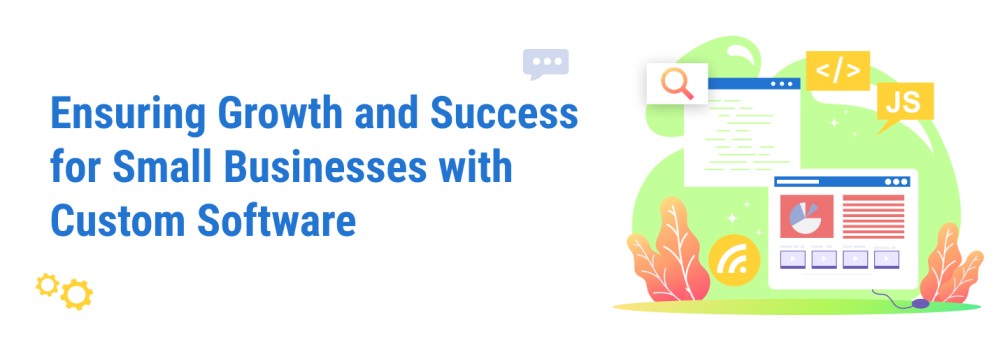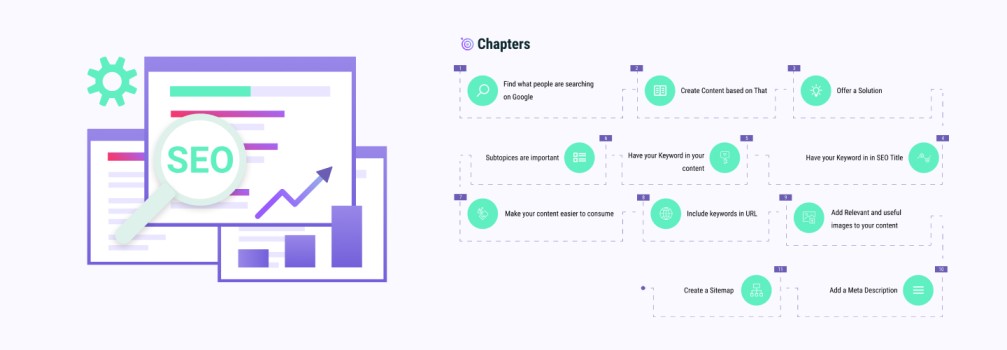Table of Contents
A Brief Guide to Web Application Development Cost
Let’s walk you through a brief guide to web application development cost.

Quick Summary :
Is finding out the right web app development agency difficult for you? This guide will help you understand the complete steps of cost estimation and cover the best ways to hire a professional web app development company, as per your requirements, without spending a fortune.
A brief guide to web application development cost. Building your business’s web presence has become a mandate in today’s world of scrolling social media and often landing straight on a shopping website. A professional web application helps your business achieve industry standards and engage your customers with the company’s offerings.
Consider the example of Google Workspace in the Google Office suite! It is one of the most established collections of web apps. Also, there is Netflix, which successfully illustrates how web apps are ideal as content platforms. Nowadays, web apps can offer users the look and feel of mobile applications on phones and accessibility across all devices and operating systems.
However, every business leader must have a proper strategy before developing their web apps to make an impeccable online brand presence. And while contemplating the development, the first question that you’ll come across is:
“How much does it cost for web app development?”
Now, since this is a much broader term to answer, we’ve created this web app development cost guide to help you break down costs based on the complexity of web applications.
When is it better to build a web app?
Web applications can be considered dynamic websites combined with server-side programming that provide functionalities such as connecting to back-end databases, interacting with users, and generating results for browsers. Some popular examples of web apps are online banking, social networking, eCommerce or shopping cart apps, online reservations, interactive games, etc.
Security
Security threats are common for businesses. Web apps can simply give protection to their business websites and software programs. They are designed for more privacy and a high level of security.
Customer support
Web apps offer enhanced customer support. They can be the first line of contact between your potential customers and business. Furthermore, they can be accessed at any time and help drive customer loyalty.
Difference between web apps & websites
Though websites and web applications sound similar, technically there’s a slight difference between these two terms. Web apps are designed to be interactive, whereas a website’s primary purpose is to present information.
Types of web apps
1. Static web apps
They consist of restricted content and have no flexibility; thus, they are simple, effortless, and less expensive to develop across the web. HTML, CSS & JavaScript are the languages used to create static web apps.
2.Dynamic web apps
These web apps fetch the data in real-time based on the user’s request, and so they are technically complex compared to static web apps. Technologies used in developing dynamic web apps are Node.js, Ruby on Rails, jQuery, HTML, CSS, PHP, Perl, Python, etc.
3. Single-page apps (SPAs)
Here, a lot of information stays on the same page, and only a few pieces of information must be updated at a time. Technologies used in SPAs are Meteor, React, Angular, Vue, Ember, and Backbone.
4. Multiple-page apps (MPAs)
For MPAs, the application reloads and displays a new page from the server in the browser whenever the user performs a new action. Technologies used in building MPAs are HTML, CSS, JavaScript, AJAX, jQuery, etc..
5. Progressive web apps (PWAs)
PWAs are websites that look like mobile applications. It lets users access the complete information and all the features of the web application using mobile browsers. These apps can be built using technologies such as HTML, CSS, and JavaScript.
Levels of web app based on complexity
Though websites and web applications sound similar, technically there’s a slight difference between these two terms. Web apps are designed to be interactive, whereas a website’s primary purpose is to present information.
Types of web apps
Basic or simple application
This web app category consists of landing pages, one-pagers, and simple e-Commerce. Examples of basic websites: Calculator pages, small online catalogs, basic online portals, widgets or additional features to the existing web apps.
Complex or large-scale web app
Exclusive web apps with enterprise business models fall in this category. Scalability is the characteristic of any application, which is all about consistent performance no matter how many users use the app at the same time. Large-scale web apps handle high-volumes of data and traffic. It also has unique CMSs, large databases, a lot of features, and tons of content.

Professional web app
This category includes small-to-medium and eCommerce websites. It consists of a lot of interactive elements with a significant volume of content. Examples of mid-level web apps: Online stores, modules or additional parts for existing web apps, marketplace-based web apps.

Basic or simple application
This web app category consists of landing pages, one-pagers, and simple e-Commerce. Examples of basic websites: Calculator pages, small online catalogs, basic online portals, widgets or additional features to the existing web apps.

Complex or large-scale web app
Exclusive web apps with enterprise business models fall in this category. Scalability is the characteristic of any application, which is all about consistent performance no matter how many users use the app at the same time. Large-scale web apps handle high-volumes of data and traffic. It also has unique CMSs, large databases, a lot of features, and tons of content.

Professional web app
This category includes small-to-medium and eCommerce websites. It consists of a lot of interactive elements with a significant volume of content. Examples of mid-level web apps: Online stores, modules or additional parts for existing web apps, marketplace-based web apps.
Here’s a quick overview of web application development cost breakdown:
| Level of complexity | Basic or Simple | Professional | Complex or Large-Scale | PWA |
|---|---|---|---|---|
| Description | It includes : website with basic functionalities, Simple landing page, Elementary Online store It Only Requires : Basic interactive forms, Little content, Standard UI elements | Dit includes : Professionally designed web projects with interactive pages & alot of information eCommerce sites with medium complexity Prototypes for future multi-functional internet portals Web presentation of small business Medium UI elementsata | it includes : Custom web app with a high level of complexity with CMS & interactive UI/UX design It helps with the automation of the process of business Custom UI/UX design | it includes :Advanced platform features Highly dynamic |
| Features | Informational web pages | Informational web pages, Admin panel, Payment API & third-party integrations, User account system | Informational web pages, Admin panel, Payment, API & third-party integrations, User account system, High user load, Customized statistics | Full responsiveness and browser compatibility, Connectivity independence, App-like interface, Push notifications, Self-updates, Safety, Discoverability and easy, installation, Offline work mode |
| Timeline | 1 month | 4 month | 6-12 month | 8-10 month |
| Cost | $5,000 - $15,000 | $5,000 - $60,000 | $60,000 - $250,000 | $25000 - $50,000 |
Factors affecting web app development cost

Scope of Work (SOW)
Scope of work is the first thing you need to determine for estimating the cost of a web app. Your web application’s scope can be as big as Netflix’s or simple as a school management system. So it’s crucial to decide the functionalities and features your web app will provide to the users. This is further distilled down to the audience you’re going to build a web app for and which purpose does it serve.
Once you’re determined about the target audience, ask yourself these questions.
- What type of web application do you want?— A simple landing page, a complex integrated system, a dashboard, or an eCommerce website? ,
- Do you want a highly interactive web application such as a PWA?
- Would you require a mobile version of it?
- What would be the possible deadline, and if any specific functions you want in your web app?
Then, it’s essential to go through all the stages of the software development lifecycle.
Discovery phase
In this stage, communicate your expectations to a business analyst who helps your business’s requirements and market and builds a strategy to enter it successfully. Accordingly, a project manager can clarify your project requirements, analyze risks, and provide cost estimation & time for your project. During this phase, you can also get a prototype of your product, ensuring your idea can be implemented from a technical standpoint.
UI/UX design
Here, the UI/UX designer works on the web app interface, business goals of your app, expectations of your target audience, etc.
MVP development:
Now, it is time to work on the product. MVP development is when the actual software engineering takes place with the basic features. Both front-end and back-end developers must ensure that a classic web application or PWA meets all business requirements. Moreover, the QA engineer should check every new feature to ensure your app works as it is supposed to.
However, it’s best to remember that the project requirements are susceptible to change over time as the business itself changes.

Developer’s physical location
The geographic location of the developers or outsourcing companies determines the hourly rates of development. Companies often prefer to outsource web development due to the higher pricing of local developers and the availability of expert developers at comparatively low rates in distant regions. For instance, hourly rates of developers in countries like the US, Canada, and Australia are the highest across the world.
Now, let’s have a look at the offshore software development rates by country and seniority.
| Position of the employee | U.S. | Latin America | Eastern Europe | Asia |
|---|---|---|---|---|
| Business Analyst | $110 – $205 | $45 – $55 | $40 – $63 | $30 – $42 |
| Architect | $198 – $292 | $60 – $72 | $50 – $77 | $35 – $48 |
| Project Manager | $133 – $233 | $55 – $66 | $45 – $70 | $35 – $48 |
| Jr. Developer | $133 – $233 | $35 – $44 | $25 – $42 | $18 – $24 |
| Mid-level Developer | $132 – $140 | $30 – $52 | $35 – $56 | $24 – $35 |
| Sr. Developer | $154 – $163 | $45 – $55 | $45 – $70 | $30 – $42 |
| Lead Developer | $176 – $187 | $50 – $61 | $45 – $70 | $30 – $42 |
| Junior QA | $77 – $81 | $30 – $39 | $25 – $42 | $15 – $24 |
| Mid-level QA | $99 – $105 | $35 – $44 | $30 – $49 | $20 – $30 |
| Senior QA | $143 – $169 | $40 – $50 | $40 – $63 | $25 – $36 |
| Graphic Designer | $79 – $163 | $40 – $50 | $35 – $56 | $25 – $36 |

Developers’ skillset
Before hiring a team, you should decide how many specialists should be on your web app development team. If you need a team with different expertise, here’s what you can expect:

JavaScript developers
As per the Stack Overflow survey, JavaScript is the most popular programming language for custom web application development. You can find out more about JavaScript Developers based on their years of experience.
Years of experience
Less than 1 year
1-4 years
5-9 years
10-19 years
20 years or more
Approx salary ratio
$62.973
$70.022
$87.281
$102.697
$113.274

Java developers
Java is considered a popular back-end programming language for web development as around 35.35% of developers used this language in 2021.
Here you can check out the average monthly salaries of Java Developers.
USA
$8.600
Switzerland
$8.400
Palestine
$7.800
UK
$7.400
Norway
$6.000
Germany
$4.900
Netherlands
$4.800
Sweden
$4.800
Ukrain
$2.500
India
$1.300
PHP developers
Next, PHP is another most used programming language across the globe since it is multi-platform and flexible.
Switzerland
$5.900
Palestine
$5.200
US
$5.000
Germany
$4.250
Worldwide
$3.750
UK
$3.200
France
$3.130
Ukrain
$1.500
India
$450

Complexity of UI/UX design
The end price of your project is determined by the overall complexity, features, additional elements, animations, etc. Ideally, the UI of an app must be attractive, intuitive, and flexible, but not cluttered with unnecessary components.
The main difference lies in design complexity, animations, and a number of elements. The app interface need not be unique and appealing, but it should be convenient to use. Thus, both designers and web app developers need time to bring it all together.
- For instance, to design a simple landing page for a music app costs $300-$500 for 6-8 hours.
- On the other hand, the complex landing page with 3D animations and elements costs $4000-$5000. However, both depend on vendor’s rates.
Furthermore, the custom design requires more time and effort, since it is a blend of mixed style that combines standard and custom elements. Also, there are two categories:
Native App Design: 60 hours - Custom App Design: 90 hours

Maintenance
- For instance, to design a simple landing page for a music app costs $300-$500 for 6-8 hours.
- On the other hand, the complex landing page with 3D animations and elements costs $4000-$5000. However, both depend on vendor’s rates.
Furthermore, the custom design requires more time and effort, since it is a blend of mixed style that combines standard and custom elements. Also, there are two categories:
Cost: $50-$5000 per year - Time: Lifelong

Hidden costs
If you don’t want to spend a fortune on your project, have a look at our compiled list of some unexpected hidden costs. It will definitely help to save thousands of dollars from your web app development budget:
Cyber Threats:
In order to save your customers’ valuable data, you may need to secure your website from malware and other security vulnerabilities. You may need to back up the data and use some paid tools to secure your infrastructure in some cases, and also need to hire security experts.
Subscription Costs for Plug-Ins, Updates & Templates:
Initially, some web builders like Squarespace and GoDaddy offer affordable packages.
It’s essential to understand the short-term and long-term goals of your website before choosing the templates. Also, if you need customization in the future, then you must have a good understanding of your requirements.
Other hidden costs also include design templates used by developers that may require you to pay for subscription costs for themes and additional plugins. It’s a good idea to clarify such costs and also maintenance costs of web apps with your outsourcing partners.
- To avoid such additional costs of plugins at the end of the project, make sure to partner with skilled development teams who have a holistic idea of your project requirements. Also, qualified professionals have the experience and knowledge of tech stacks that don’t require additional plugins for simple tasks but rather develop functionalities.
- Use tools like product backlog approach for a prioritized list of software development tasks.
Hence, you can always prevent such unforeseen app maintenance and hidden costs to a greater extent by hiring a trustworthy and professional web app development company.
What should you pick – In-house team, Freelance team, Outsourcing Team?
Being a business owner, you must be juggling multiple factors and questions while developing a web application. The following questions may arise:
- Do I really need a freelancer to build my software product?
- Should I outsource it or not?
- Or, should I hire an in-house team instead?
Answering such questions is surely a challenge for all businesses. There is no right and wrong decision, it’s all up to different circumstances for different companies.
Here are the advantages and drawbacks of each of these three options.
In-house team
A traditional way of hiring a team of web developers is an in-house team. Such a team works in a designated workplace directly managed by your company. The in-house team shares the same goals, vision, and mission. The developers are aware of all the local laws, rules, and regulations.
Benefits:
- By hiring an in-house team, you can get great interaction and face-to-face communication.
- The employer has complete control over the functionalities and activities of the team.
Drawbacks:
- High cost & time consuming: The process of finding the team of right developers can be lengthy and stressful. Also, the cost of hiring in-house developers is
significantly higher than offshore developers. - Companies will be entirely dependent on in-house teams: When companies hire in-house developers, sometimes their work completely depends upon them.
The probability of the entire project suffering as a result may be higher. It may cause cost overruns and extended deadlines.
Bottom line:
- In-house teams can do wonders for big-sized companies. But, it is not the best choice for you when starting a new project.
Freelance team
Freelancing is the cheapest option for hiring web developers, especially if you’ve a limited budget. Dozens of websites are available to help you with hiring freelancers for developing web applications as per your requirements. The hourly rates of freelancers are significantly cheaper as per different locations. The average hourly rate of freelance developers in Latin America starts from $35 to $80, while in India, it starts from $15 to $50.
Benefits:
- You can build a team fast and at a low cost.
- You will have direct control over the activities of freelancers.
- Zero charges of any upfront cost.
Drawbacks:
The drawback with this engagement model is that you can’t rely on one person for completing a large web app development project that needs serious consideration from expert developers and explicit knowledge of tech stacks. You may face some challenges such as communication gaps and low-quality development when you opt for this engagement model.
Bottom line:
Hiring a freelancer is profitable for urgent or simple programming tasks. But, it is recommended not to hire a freelancer for complex web apps.
Outsourcing team
As per Grand Review Research, the global IT services outsourcing market size was valued at $520.74 billion in 2019. However, it is expected to grow at a compound annual growth rate (CAGR) of 7.7% from 2020 to 2027.
Outsourcing web app development means partnering with a whole team, who can fully develop an app from understanding ideas to delivering the final product.
You need to pay the money for actual work done per the outsourcing company’s hourly rates. Big companies like Google, Slack, Alibaba, and Microsoft outsource software development due to its large number of benefits.
Benefits:
- The cost of labor is much cheaper overseas.
- Cost savings: With huge cost savings, you can use your money later for a bigger and more featured project.
- No office distractions: For many developers, the office environment can be a huge distraction. However, working as an outsource developer can help them work more efficiently.
Hence, if web development services are expensive in your region, outsourcing is the best and affordable option. You can find and hire a contractor in any country where web app development cost is lower.
Drawbacks:
- Hiring an outsourcing team has minimal drawbacks. With this team, you can save a lot. All you need to pay only for actual work done as per hired company’s hourly rate.
Ready to hire a development partner?
So, you’ve just gone through several factors, which can affect software development costs. Now you have an understanding of how companies control the expenses for your project.
If you’re looking for a professional web app development company or skilled web developer, we’d recommend asking yourself these questions:
- I’ve an app idea, but I still need assistance in estimating web application development costs?
- How much does a single-page application cost?
- How long does it take to make a web application?
Answering these questions will surely assist you in figuring out which is the best choice for you.



